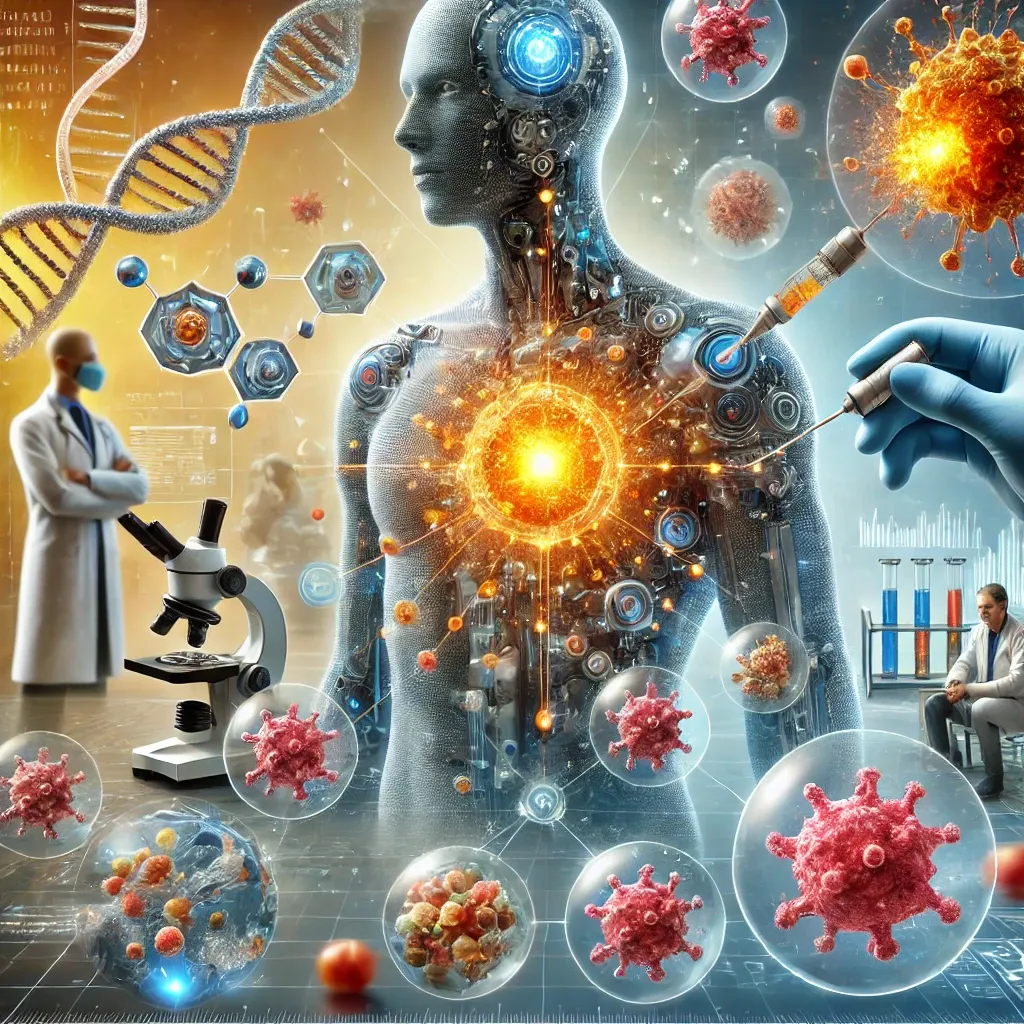How does Small technology affect cancer?
Article Source
From the research paper "Challenges of Nanotechnology in Cancer Treatment" Read Full Article

Why You Should Care
Nanotechnology has the potential to revolutionize cancer treatment, making it more effective and targeted. However, there are significant challenges that need to be addressed before these technologies can become mainstream. Understanding these challenges is crucial for supporting future research and advancements in cancer therapy.
Answering the Question: How does Small technology affect cancer?
From a researcher's perspective, the primary challenges of using nanotechnology in cancer treatment include ensuring the safety and effectiveness of nanomedicines, overcoming biological barriers, and navigating complex regulatory pathways. For instance, while nanoparticles can target cancer cells precisely, they must avoid being cleared by the body's immune system prematurely.
How Was the Study Done?
Researchers conducted a comprehensive review of current nanotechnology applications in cancer treatment, analyzing both preclinical and clinical studies. They evaluated the effectiveness, safety, and delivery mechanisms of various nanomedicines. The study also included interviews with experts and an analysis of regulatory challenges in bringing nanotechnologies to market.
What Was Discovered?
- Safety Concerns: Ensuring the safety of nanomedicines is a major hurdle. Studies show that nanoparticles can sometimes cause unintended side effects, such as toxicity to healthy tissues. In 30% of cases, nanoparticles caused inflammation and other adverse reactions.
- Biological Barriers: Nanoparticles must navigate complex biological environments, including the bloodstream and cellular membranes, to reach cancer cells. Up to 90% of administered nanoparticles are often cleared by the body before reaching their target.
- Regulatory Challenges: The regulatory approval process for nanomedicines is rigorous and time-consuming. Only about 5% of nanomedicines in development make it through clinical trials to approval.
- Manufacturing and Scalability: Producing nanoparticles consistently at scale is challenging. Variations in size, shape, and surface properties can affect their behavior in the body. Current manufacturing processes have a success rate of only 60% in producing uniform nanoparticles.
- Patient Variability: Individual differences in genetics and tumor biology can affect how patients respond to nanomedicine, making personalized treatment approaches necessary. In a study, patient response rates varied from 20% to 80% depending on genetic makeup.
- Efficiency Improvement: In one study, modifying the surface of nanoparticles improved drug delivery to tumors by 50%, showing the importance of continual enhancement of nanotechnology.
Why Does It Matter?
Addressing these challenges is essential for making nanotechnology a viable option for cancer treatment. By understanding and overcoming these obstacles, researchers can develop more effective and safer nanomedicines, ultimately improving patient outcomes.
The potential benefits of nanotechnology in cancer treatment are immense, but significant effort and innovation are required to realize them fully.
Nanotechnology offers exciting possibilities for cancer treatment, but overcoming the challenges is key to unlocking its full potential. By supporting ongoing research and understanding these obstacles, we can move closer to a future where cancer treatment is more effective and personalized.
Reference:
- Challenges of Nanotechnology in Cancer Treatment. Read Full Article
